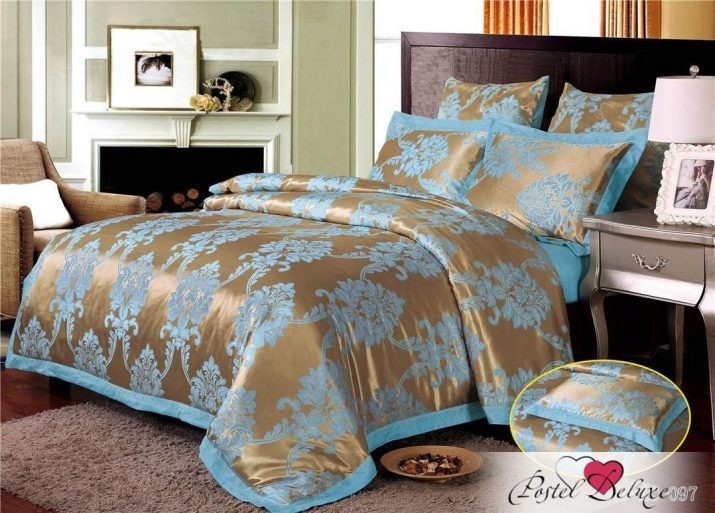Satin bed linen
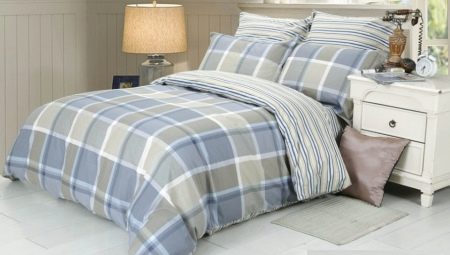
Different types of fabrics are used to make bed linen. The materials themselves are created from natural and synthetic fibers. Satin is one of the most popular materials for the production of textiles. It is beautiful and pleasant to the body, has a high density and strength. For the production of this fabric, cotton fibers are used, sometimes synthetics are added to reduce the cost. Outwardly, it resembles natural silk, but it costs several times cheaper. The visual nobility and good performance of satin bedding determine a high consumer demand for such products.
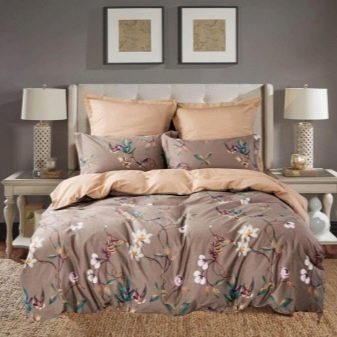
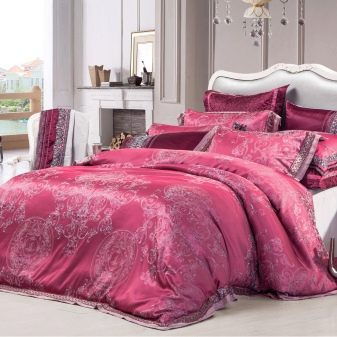
What it is?
Satin is a cotton material, the front side of which shines like satin, and the back side is matte. This feature is achieved due to the special weaving of fibers in the production of fabric. The composition of the fabric can vary. Typically, the textile manufacturer indicates it on the label. Satin can be mixed. In the manufacture of such a fabric, elastane or polyester is added. Bedding is most often made from natural cotton sateen.
To obtain it, cotton goes through several stages of processing: it is combed out, debris and shortened coarse fibers are removed. The production technology includes several stages:
- spinning threads;
- fabric production;
- performing mercerization.
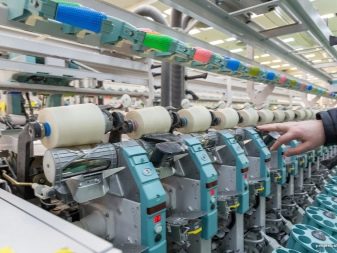
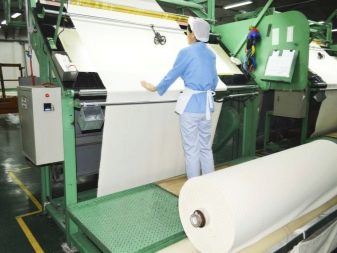
The last step is to change the chemical structure of the material. Thanks to mercerization, the fabric acquires strength, smoothness and color fastness.This is an expensive method of making satin, which produces high quality fabric. There is also a more budget-friendly production method. It is hot stamping. In order for the surface to acquire additional smoothness, it is subjected to pressing or calendering. The process involves rolling the web between hot rollers of special equipment, as a result of which the rounded threads turn into flat ones. After this treatment, the surface of the material acquires a silvery sheen.
The finished canvas is dyed. For this, pigment and reactive methods are used. The first way is simpler and cheaper. It involves the application of pigment to the front side of the canvases. With this method, the dye does not penetrate into the deep layers of the fibers. Textiles made from fabrics dyed with a pigment method do not look beautiful for long: after 10 wash cycles, the colors begin to fade, and textiles lose their attractiveness.

In reactive dyeing, special chemical pigments are used, due to which the paint reliably adheres to the fiber.
The result is high quality canvases that are resistant to fading. They are able to withstand up to 300 washes while maintaining visual flawlessness.
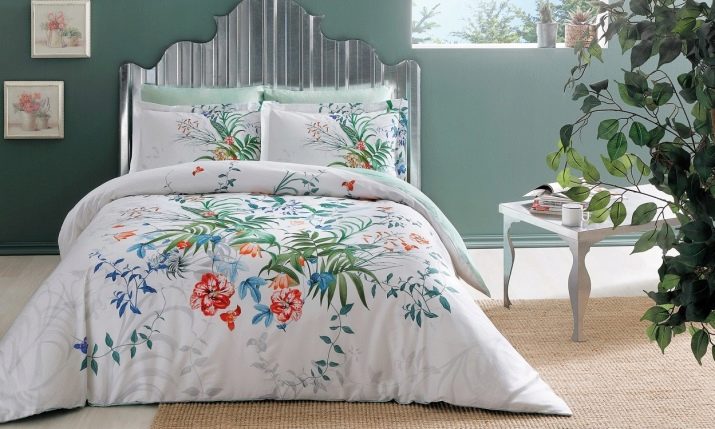
Pros and cons of the material
The main advantage of satin sets is their durability. Satin can withstand a large number of washes, while it retains saturated colors for a long time and does not shrink. The material has a high density, so it does not wear out even with intensive use. Another advantage that satin bedding wearers like is the ease of maintenance. Such textiles practically do not wrinkle: to make the blanket or pillows look fresh, shake them vigorously enough.
Satin, despite its high density and strength, is excellent for air permeability and allows the body to breathe. It removes excess moisture well. Due to its hypoallergenic properties, it can be used by people with sensitive skin and those who are prone to allergies. The material perfectly retains heat, which means that it will be comfortable to sleep on satin underwear in winter, when the room is cool. In summer, sleeping on satin bedding will be hot, and this is its main drawback. Another disadvantage is the high prices for linen, although they, of course, are lower than for silk and other similar materials. In addition, satin can slip, making it uncomfortable while sleeping.
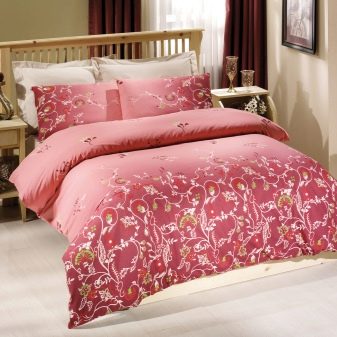
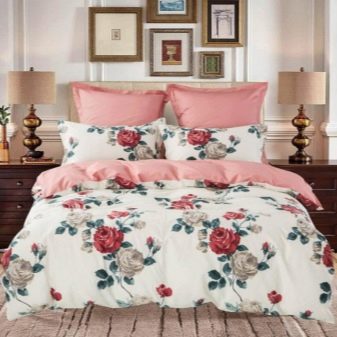
Views
Satin is divided into several groups. The material is natural, synthetic and combined.
Natural and combined
There are several varieties of satin with different composition and production technologies. Both the appearance of the canvas and its price will depend on them. Consider natural and combined types of satin.
- Twill satin. Natural cotton fiber fabric. Outwardly, it cannot be distinguished from traditional satin. The difference lies in the production technology. When making satin, there are 4 main weft threads per 1 thread. In the production of twill satin, the same amount of warp and weft is used. Due to this manufacturing feature, twill satin has less strength. But it has a more favorable cost.
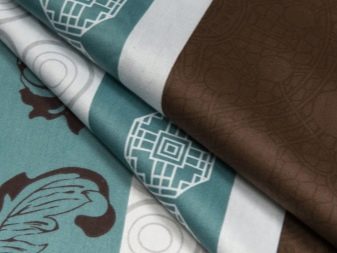

- Polysatin. This is a blended material, in the production of which natural cotton and polyester fibers are used. Due to the use of polyester, polysatin bedding does not conduct air well, accumulates static electricity and is poorly hygroscopic.
The more synthetic fibers in the fabric, the less its performance properties are close to natural fabric.
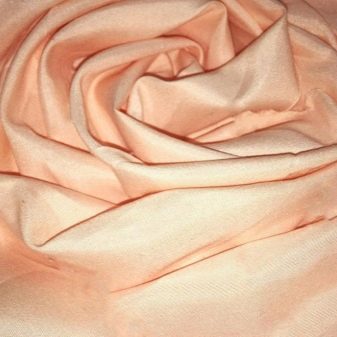

- Microsatin. It is a blended material made from polyester, cotton, bamboo or rayon. The canvases consist of 2 weaves. Some manufacturers add polyester to increase the strength of the material.Thanks to synthetic fibers, microsateen is less wrinkled and more durable than classic satin. Its advantages also include lower cost.
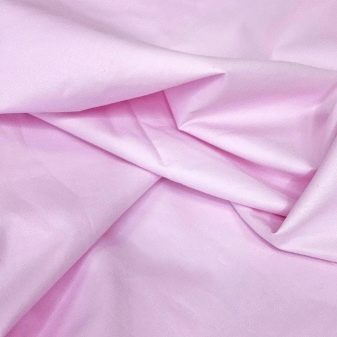
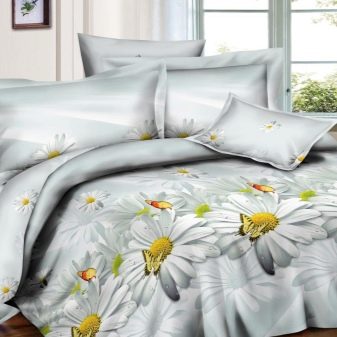
- Silk satin. Natural fabric made from interwoven cotton and silk threads. Visually, the material resembles an atlas. It is used to make expensive and elite luxury bedding sets.


- Ecosatin. A fabric that is made using the same technology as classic satin. Outwardly, these 2 materials are indistinguishable. The only difference is in the method of staining. When creating eco-satin, only the upper part of the canvas is painted. In this case, the pigment is applied by printing, which significantly saves both the amount of dye and time. The result is a material with the same characteristics as ordinary satin, but its cost is lower.
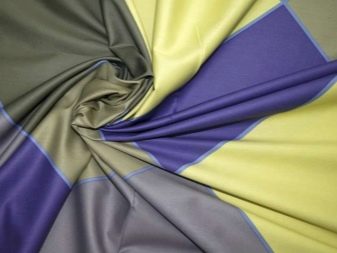
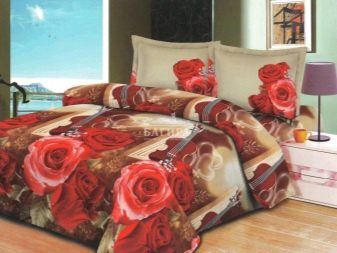
- Crepe satin. This material can be natural or blended. It is a two-sided fabric, the front side of which is smooth and the back side is grainy. In such a fabric, any of the sides can become the front.
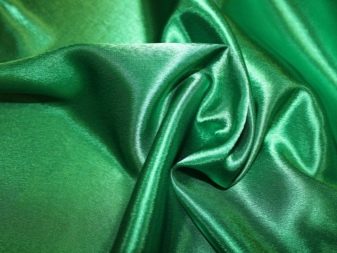
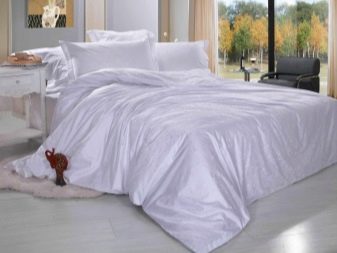
- Soft satin. This is a combined material in the manufacture of which natural cotton and viscose are used. The canvases are particularly durable and resistant to abrasion and other mechanical damage. The fabric is available in plain color or with a printed pattern.
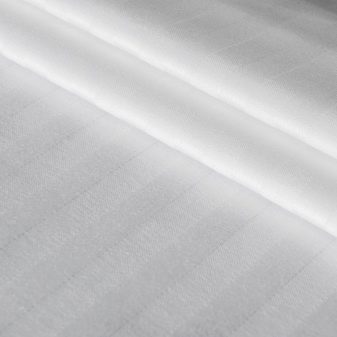
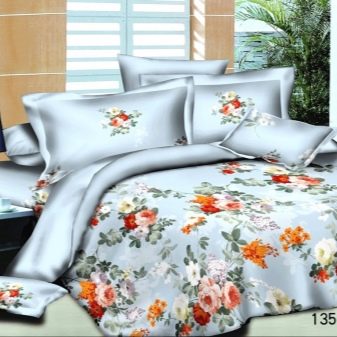
For the manufacture of bedding sets also use reaper (textured fabric made from twisted cotton threads), slim satin (thin blended material). Insulated sleeping sets are often sewn from satin velvet. In the production of this fabric, threads with a pile are used. The result is light and soft fabrics with a fleecy texture.
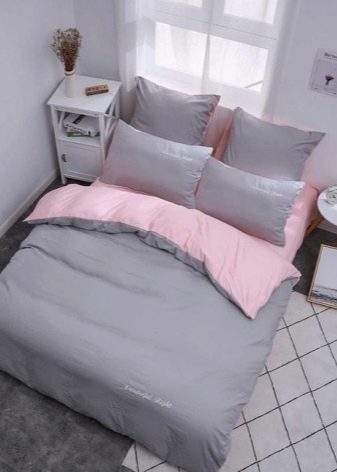
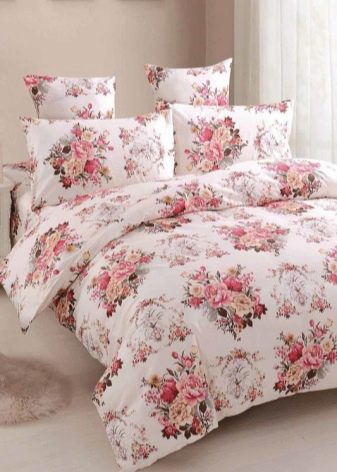
Synthetic
For the manufacture of artificial canvases, special polyester threads are used, which are interconnected by the method of satin weave. Thick threads are taken for the base, and thin twisted ones are used to create the front side. Bed linen made of synthetic satin is outwardly indistinguishable from textiles made from fabrics with natural cotton fibers. It is elastic, pleasant to the body, resistant to deformation and fading, tear-resistant and durable. Its disadvantages include a hard surface and the ability to accumulate static electricity.
Synthetic satin poorly permeates air and does not remove moisture, which is why its surface becomes a favorable environment for the development of harmful microorganisms.
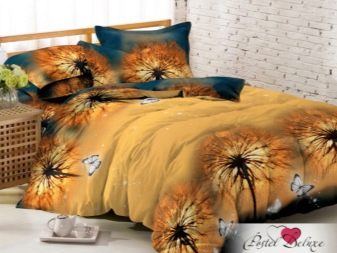
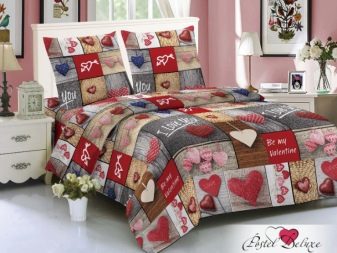
Design
The selection of satin sleeping sets is huge. The shop windows showcase textiles with a variety of designs. Each customer will be able to choose a set in accordance with personal preferences and requirements for his appearance.
Plain bedding is popular. This is a versatile solution that will suit any style and interior of the bedroom. On sale are textiles in white, black, gray and pastel colors, as well as trendy bright options. Green, purple, orange, burgundy, crimson, red colors will help diversify the interior of the room and significantly transform the space. For lovers of something more interesting, two-tone underwear is suitable.
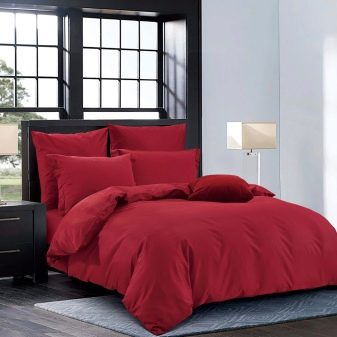
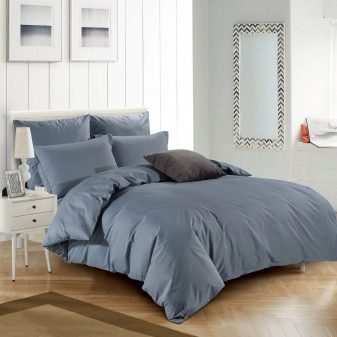
Thanks to the emergence of new technologies, manufacturers have begun to produce beautiful 3D underwear. The choice of ornaments and patterns is huge here. There are color kits for teenagers, newborns and adults on sale. The accessories may include various flower arrangements, pets, illustrations of wildlife. New Year's sets are popular from this series. They will help create a special atmosphere of magic in your home on New Year's and Christmas Eve. For children, 3D sets with cartoon characters, kittens, puppies, dolls are suitable.
Bed textiles with embroidery are also not losing their positions in popularity. Such satin sets look expensive and respectable.The only drawback of the kits with embroidery is their high price. Most often, expensive luxury products are produced with this design.

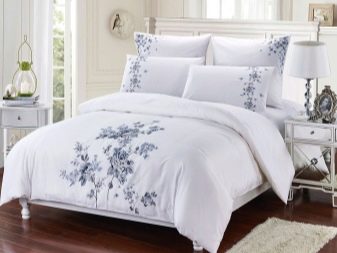
Dimensions (edit)
Satin sets are available in different sizes, so you can quickly find a solution for a single bed, double bed or sofa. The smallest are children's sets for mattress dimensions 160x80 cm. The sizes of their sheets are from 100x140 to 130x160 cm, pillowcases - 25x30 cm, duvet cover - from 110x140 to 125x150 cm.
For a single bed, the standard dimensions of the sheet are 110x200 cm, the duvet cover is 135x200 cm, the pillowcases are 50x70 cm (1 piece is included). For one and a half bed accessories, the dimensions are slightly larger. Another difference from previous models - 2 pillowcases instead of one. The dimensions of the duvet cover are 150x220 cm, the sheets are 145x200 cm, and the pillowcases are 70x70 cm.
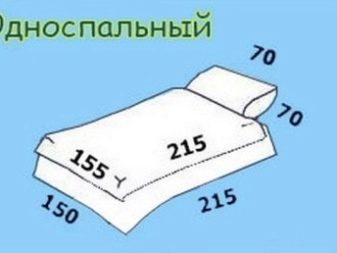
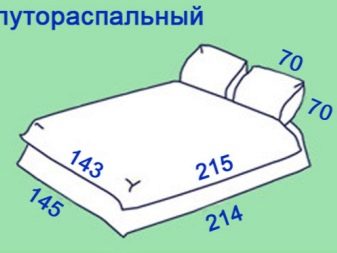
Double linens are designed for large beds. The most popular sizes are: duvet cover - 180x220 cm, bed sheet - 200x220 cm, 2 pillowcases 70x70 cm each. If a married couple is used to covering themselves with different blankets, a family set will suit them. Its peculiarity is 2 duvet covers instead of one. For those who want to tuck a sheet under the mattress, Euro sets are suitable.
The size of such a sheet is 240x220 cm, the duvet cover is 200x220 cm.
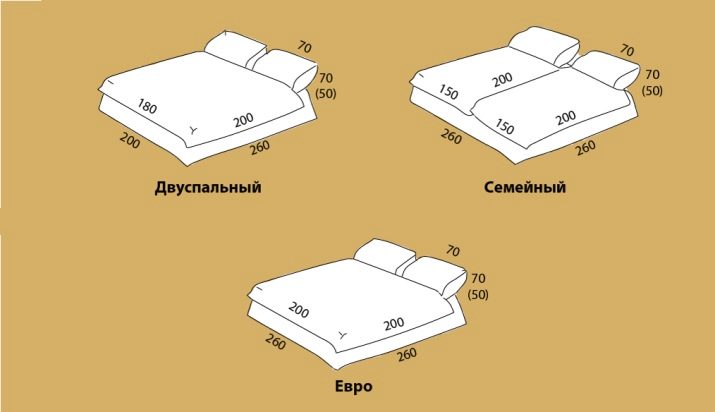
How to choose?
When buying textiles, you need to study the information from the manufacturer on the label. It is best to give preference to products made from completely natural fabrics that do not have synthetic fibers. These are marked "Made from 100% cotton". An important characteristic is the density of the fabric: the higher the value, the greater the wear resistance and durability of the textile will be. The strength of satin ranges from 110-180 threads per 1 sq. Cm. If bed linen is used very often, for example, in hotels and hotels, then it is best to choose sets of the densest materials.
It is recommended to give preference to textiles with an indication of mercerization. It will retain its shine for a long time and will not be covered with pellets. Textiles should not emit strong unpleasant odors. They will indicate the use of low-quality pigments that were used to dye the canvas. When choosing a design, you should focus on your taste preferences and the interior of the room.
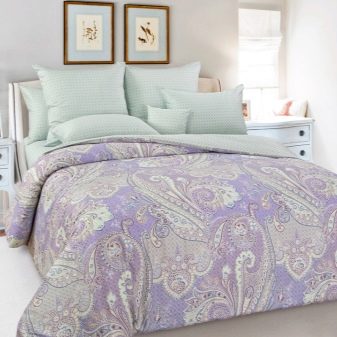
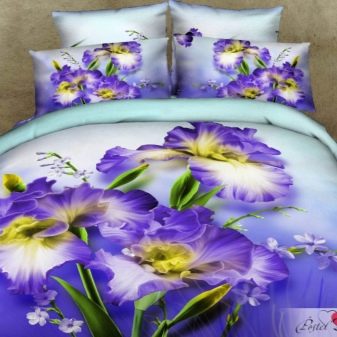
Manufacturers rating
Satin bedding sets are made by domestic and foreign manufacturers. Let's present the most popular brands that consumers love due to their good value for money.
- BORIS. A Turkish manufacturer that makes quality satin bedding with floral prints and patterns, as well as youthful minimalist designs. The assortment also includes sets of polysatin.
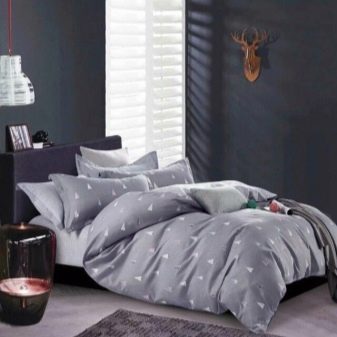
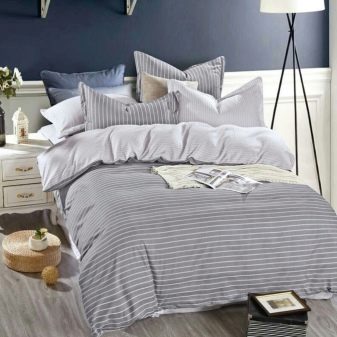
- Lorida. Another Turkish company that offers quality bedding textiles at a budget cost. The catalog contains sets for every taste: from light monochromatic to bright with patterns and floral motifs.
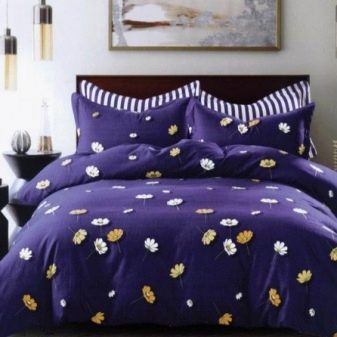
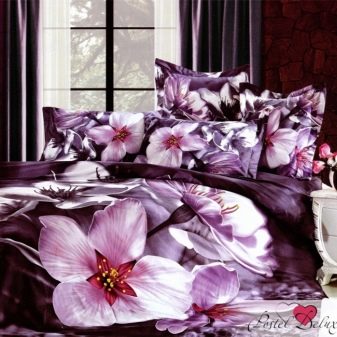
- "Vyatskiye Zori". Manufacturer from Russia, which offers an extensive selection of satin bedding sets in different sizes and colors. On sale there are 2-bed, 1.5-bed linen, as well as sets of "euro" and others.
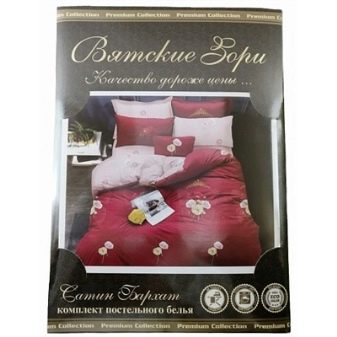

- Karina. Turkish manufacturer that produces bright and juicy bedding sets. Most kits have an elasticated sheet.
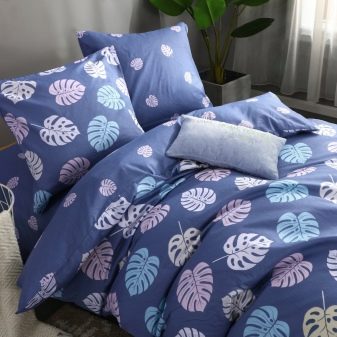
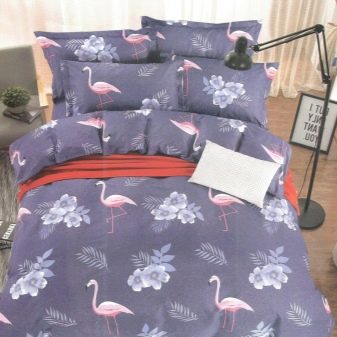
- Alanna. Another manufacturer from Turkey. Offers solid color bedding sets in calm and vibrant colors. The catalog also contains models supplemented with prints.
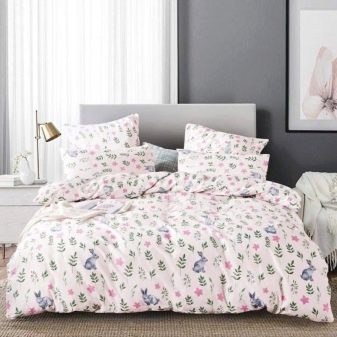
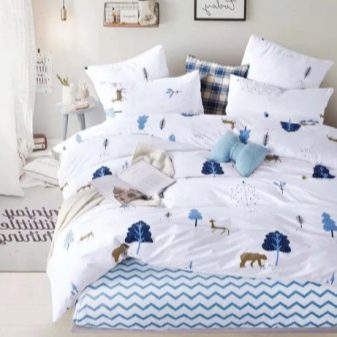
- Tango. Brand from China. The manufacturer offers quality kits at affordable prices.
The manufacturer claims that the Tango linen will withstand over 300 washes without compromising on performance or aesthetics.
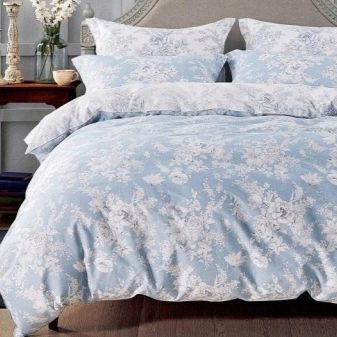
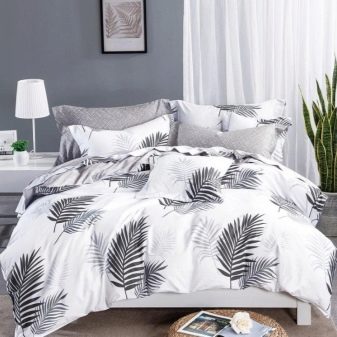
- "Tex-Design". This is a Pakistani manufacturer that sews bed linen mainly from natural fabrics. There are family models on sale.Sets from the "Royal Temptation" series are popular among domestic consumers.
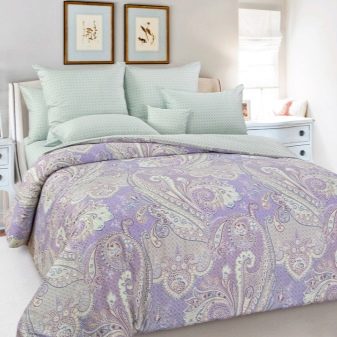
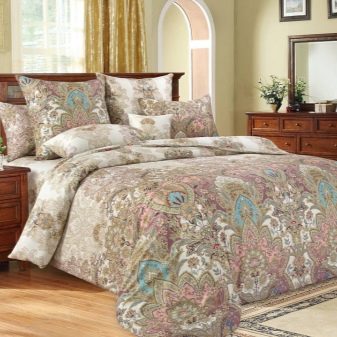
- Karteks. Turkish firm. Offers a wide range of home textiles. Engaged in sewing jacquard and printed satin bedding sets. The linen is distinguished by its original design, reliability and durability. It cannot be called cheap: on average, the kit costs from 4000 to 5000 rubles.
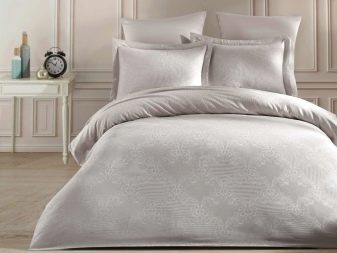
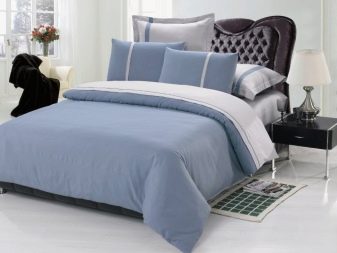
- "Unison". This brand belongs to the Russian company Neotech. It is engaged in the production of bed textiles from satin and biomatine. The assortment includes solutions with romantic themes, leopard patterns, ornate patterns, abstraction, floral motifs and other designs.
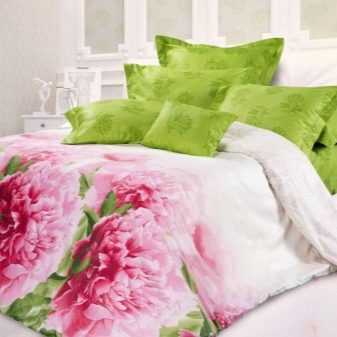
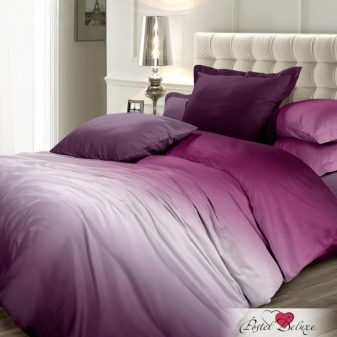
- "Ivanovskiy Textile" ("IV-textile"). Domestic manufacturer that offers budget satin bedding with 3D design. A set of bed textiles will cost from 1,500 to 2,000 rubles.
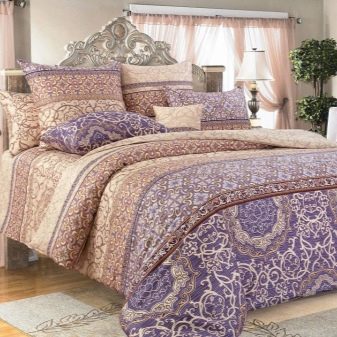
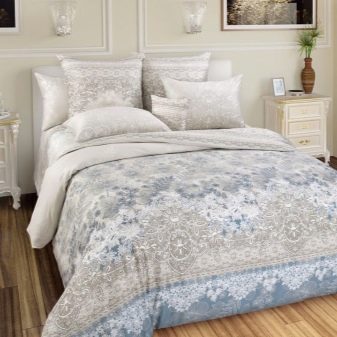
Boyartex, ArtPostel, Milano, Asabella, Valtery - all of these are manufacturers who also produce high-quality and durable bedding. Their linen does not fade during washing, retains its original sizes and colors.
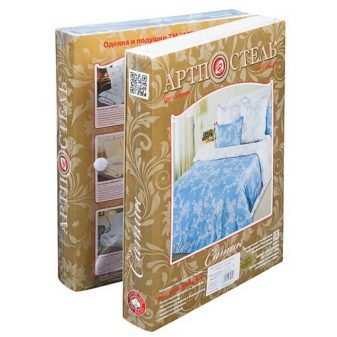

How to care?
Proper care of bedding is a guarantee of the durability and safety of the presentation of textiles. In order for bed linen to last a long time and not become unusable in the first year of use, you need to adhere to the recommendations for care. This information is indicated on the tag included with the kit.
When caring for bed textiles, you must adhere to the following rules.
- You can wash it manually or with a typewriter. When washing in a washing machine, you need to choose a gentle mode and a temperature of 40 degrees.
- It is not recommended to use bleach to remove dirt. If the stains are stubborn, oxygen bleaching agents are acceptable. It is impossible to remove contamination with chlorine-containing substances.
- When washing in a typewriter, it is recommended to turn the garments inside out. So they will keep the brightness of the colors longer.
- Dry wet textiles inside out. It is advisable that direct sunlight does not fall on it. Compliance with these measures will prevent premature tarnishing of the laundry.
- Satin bedding should not be ironed. At high temperatures, the structure of the fibers is disrupted, due to which they gradually lose their ability to pass air.
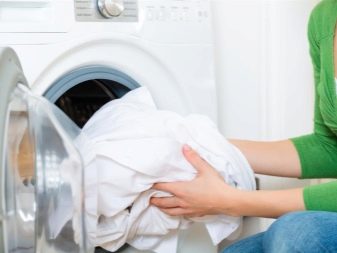

Satin bedding sets can last at least 10 years.
However, for this it is important not only to properly care for them, but also to store them correctly. For these purposes, you can use ventilated boxes. In the closet for bedding, you need to allocate a separate shelf. Dried citrus peels or lavender branches can be placed next to the textiles. Their smell will scare away moths and give the linen a delicate pleasant aroma.
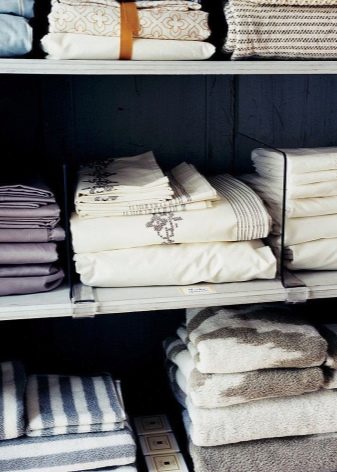
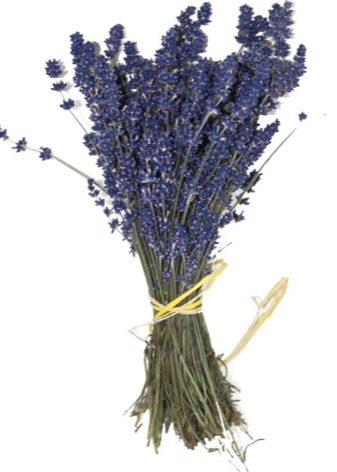
Review overview
The overwhelming majority of customer responses to satin bedding sets are positive. Consumers like bright colors, smoothness and silkiness of the material, its reliability and long-term preservation of its appearance. Satin bed linens provide a quality night's rest. Sleeping on it is pleasant, because it allows air to pass through well and removes moisture.
You can also find negative reviews on the web. For example, some buyers complain about the high price of satin textiles, while others note the poor quality: rough processing, the presence of an unpleasant odor, and color mismatch. In order not to buy a low-quality product, you should not order kits from dubious manufacturers at low prices.
